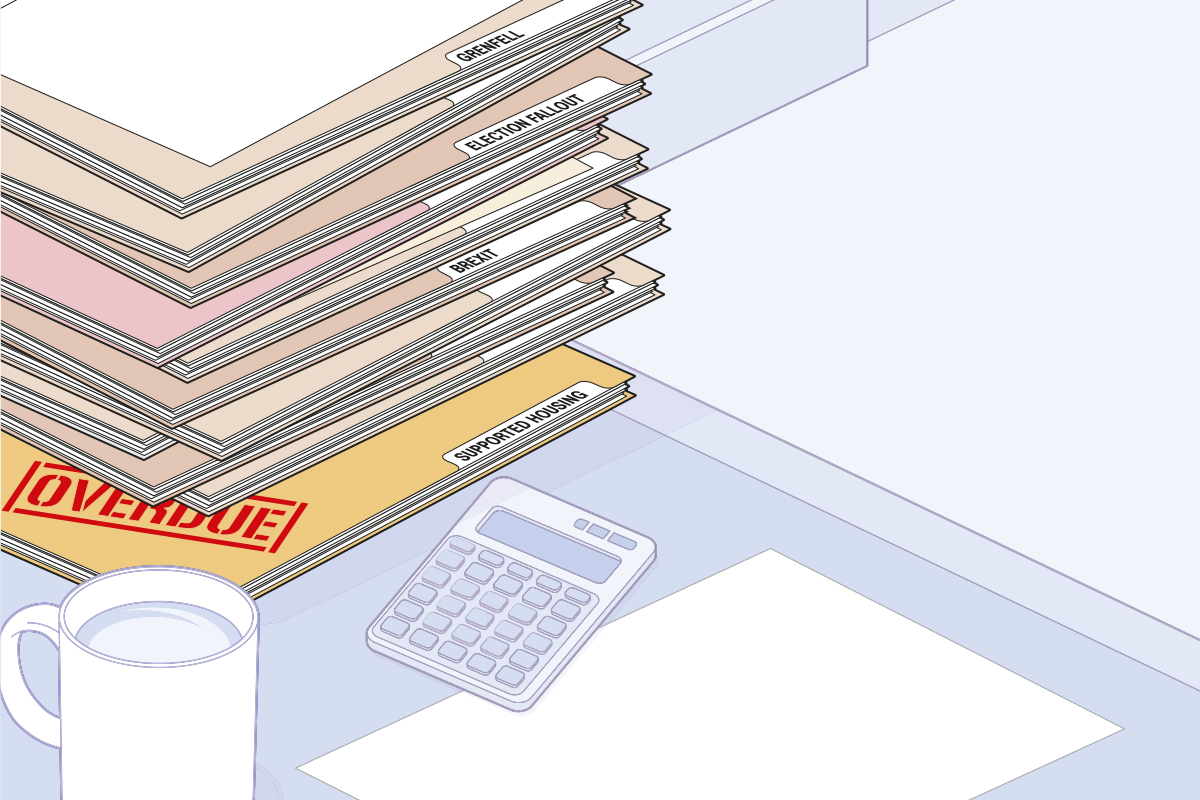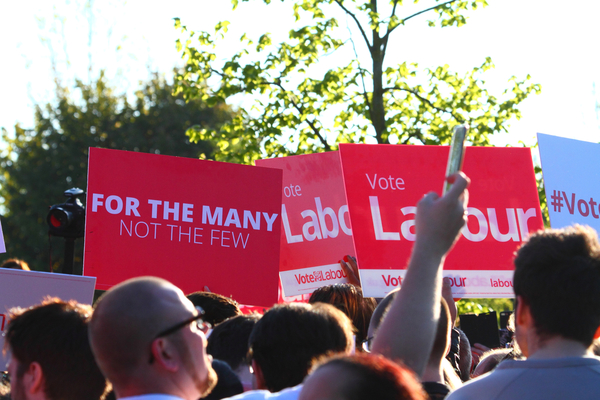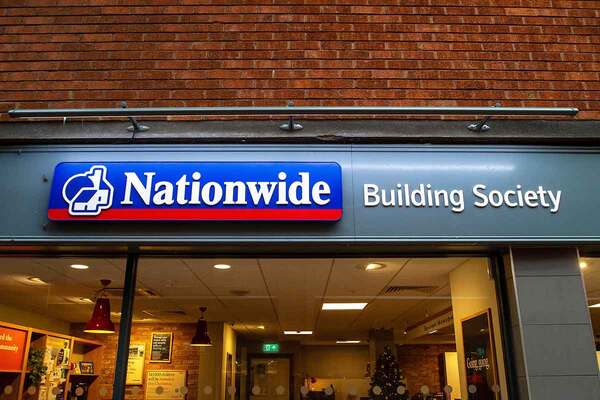You are viewing 1 of your 1 free articles
Supported housing: bottom of the pile?
An overstuffed political agenda has meant supported housing funding has been pushed aside. Sophie Barnes investigates. Illustration by Willie Ryan
For several years, the supported housing sector has been in turmoil. Government plans to cut its funding have loomed and a series of reviews and ministers changing positions have caused confusion. The question on everyone’s lips remains: what is the future of supported housing if funding is cut?
While for many, the government’s plan to apply Local Housing Allowance (LHA) rates to supported housing came like a bolt from the blue in 2015, it is something the government has been considering since 2011. Housing providers have argued that this change would mean planned developments would have to be cancelled and existing schemes closed. This is because LHA rates do not cover supported housing rents in some parts of the country – particularly the Midlands and the North.
In response, the government offered what it hoped would be a consolation. Any shortfalls in funding would be covered by a top-up fund managed by councils and a green paper would be published in “late spring” that would allow the sector to offer its input before the government brought in any concrete new policy.
But several months later, there is no sign of the promised green paper, supported housing schemes remain under threat and new developments are nothing more than architects’ sketches stuffed in drawers.
An unexpected general election, the result of which dealt the government a wounding blow, as well as the complexities of Brexit negotiations and more recently the Grenfell Tower disaster, have kept ministers busy. But this means the future of supported housing has become one of the casualties of an overstuffed political agenda. As the sector is left hanging, new research has added to the growing body of evidence against applying the LHA cap to costly and crucial supported housing.
The Salvation Army provides 5% of supported housing for homeless people across Britain. Many of these people have addictions or mental health conditions, and some are ex-prisoners.
Exclusive new analysis commissioned by the charity and carried out by consultancy Frontier Economics reveals that if the freeze on LHA rates continues into 2020/21 and there is no top-up funding available, 91% of the charity’s homes would cost more to run than there is funding to cover them. This means the charity would be forced to raise income elsewhere. The average cost per home for The Salvation Army in 2015/16 ranged from £153 in the South West and Wales to £201 in the North West.
“We are willing to look more creatively at what we can do with that top-up fund.”
The analysis also found that the average top-up needed to offset the reduction in revenue would be around £78 per home per week, but this varies between regions depending on the local LHA rates. The differing costs of supported housing for the charity vary mainly based on the type of housing provided, the analysis reveals. Larger houses with more units are cheaper to run due to spreading costs such as utility bills and council tax across the units. Units that are rented from housing associations will have higher charges for things like maintenance work to recoup the costs, and if catering is provided in the housing.
The analysis found that without a ‘top-up’, income would only be enough to cover around two-thirds of the costs of providing supported housing. Revenue would be below costs in all regions except London, where LHA rates are higher because of more expensive rents. Housing for homeless people often costs more than other types of supported housing, the analysis found. This is because there is a need for services like a 24-hour concierge and regular repairs because damage is more likely to occur in the properties.
Further alarming evidence came from the National Housing Federation last week. It revealed that 69 housing associations that provide a third of supported housing are planning to drop 85% of supported housing developments – 7,450 units – because of the continued uncertainty over future funding.
Competing aims
Housing figures are confused by what seem to be contradictory government aims. On the one side, the Department for Communities and Local Government (DCLG) is calling for more housing and backing Housing First pilots. On the other side, the Department for Work and Pensions (DWP) is seeking to bring down the housing benefit bill by cutting supported housing funding.
As Tony Stacey, chief executive of South Yorkshire Housing Association, puts it, the DWP’s aim is harming the DCLG’s support for Housing First. “A lot of associations are thinking ‘this is just too risky; it’s undermining everything else we’re doing so we will close down or at the least severely curtail our provision for extra support for vulnerable people’, and that applies to Housing First as much as it applies to sheltered housing,” he says.
Mr Stacey thinks supported housing is not the only type of development that could slow to a trickle.
“The whole of the Housing White Paper is about building more homes. But that National Housing Federation statistic of 85% of supported housing developments being stopped in their tracks is completely against what the White Paper is saying.
“The DWP is making sure not only that associations do not build supported housing, but also – because it affects their risk profiles – it will stop a lot of general needs housing going ahead. Associations will say ‘well, our map for the future and our credit rating look far riskier now, what can we do to mitigate that? One of the more risky things we do is to develop homes speculatively or for social rent; we’ll have to do less of that’.”
Supported housing providers have tried to work with the government to offer their take on a new model of supported housing funding that could better cover its full cost. Greater Manchester Housing Providers (GMHP) – made up of 26 housing associations – has offered to pilot a scheme using a national rate to set rents in supported housing, calculated based on typical costs of running schemes, instead of LHA rates.
However, despite proposing this five months ago they have had no response from government.
Charlie Norman, chief executive of St Vincent’s Housing Association, part of GMHP, says: “We have offered to work with government because we’re a devolved region and we have got the opportunity to work with health and the 10 local authorities. Ultimately we fundamentally disagree with using the LHA rate for supported housing but we are willing to look more creatively at what we can do with that top-up fund as part of the devolution agreement.”
But there has been no response from government, she says.
When Inside Housing approached the DCLG about the Greater Manchester pilot, a spokesperson said: “We welcome the input into our recent consultation, which we are considering, and we will set out further details on our plans in the autumn.”
In the government’s timeline to release the green paper, spring became summer and summer has now become autumn. And for a sector desperate for clarity, this delay is causing damage of its own.










